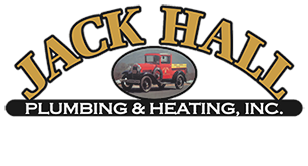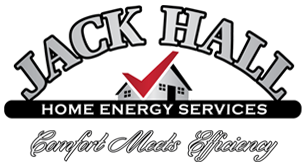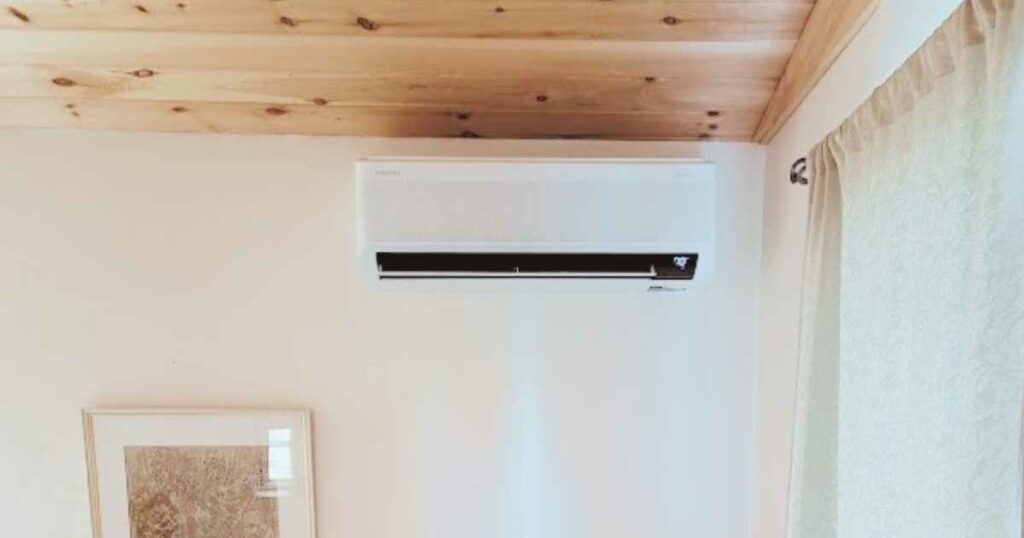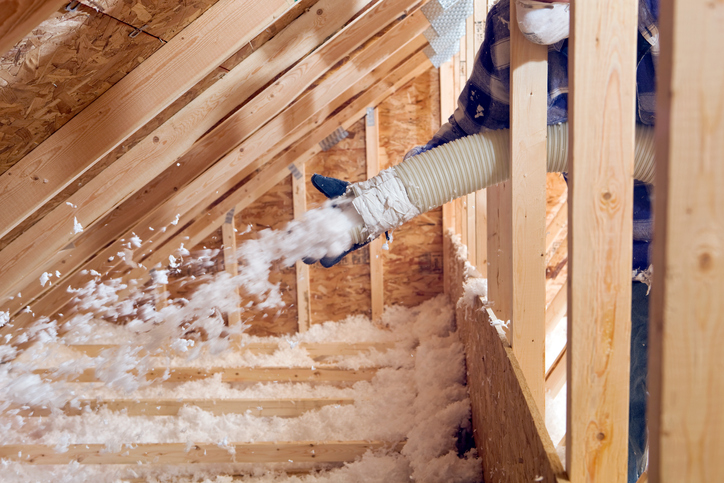Most residential homes are insulated with cellulose, fiberglass, or rigid foam that was either blown in, rolled out in batts, or fastened between wall studs. The one thing they have in common is they don’t like to get wet.
How Does Water Impact Insulation?
The key differences between the most common types of residential home insulation are the materials used to make them. Because of their composition, exposure to water and humidity impacts them differently.
Cellulose Insulation
Cellulose loose-fill insulation is eco-friendly because it’s comprised of plant fibers. But these fibers soak up moisture like a sponge. This is a loose material designed to fluff up to completely fill spaces. When it gets wet, the fiber’s weight increases causing it to compress which negates its insulating qualities, particularly in walls.
Fiberglass Insulation
Fiberglass batts won’t absorb water because they are made of spun glass. However, if this type of insulation gets wet the downside is the moisture will drastically reduce its efficiency. When fiberglass batts are waterlogged, there’s also a good chance of damage to the home’s wooden structures surrounding the insulation.
Rigid Foam Insulation
Rigid foam insulation is available in many different varieties that can withstand various degrees of moisture exposure without significant damage. However, long-term exposure to water or excessive humidity hurts its thermal performance and impacts the material’s structural integrity.
Can Wet Insulation Be Salvaged?
If insulation is damp or only a small section is wet, you might be able to leave it to dry on its own or help it along with a fan or dehumidifier. If a large section is affected and the insulation is soaked salvaging the wet insulation probably isn’t a viable option.
Because it’s so absorbent, cellulose insulation retains moisture for a long time making it difficult to dry completely. It also degrades very quickly and won’t work well once it gets wet. That’s why unless the affected area is very small, removing and replacing cellulose fill is generally recommended.
If fiberglass batting gets wet, the fibers become fused which impedes airflow and makes it lose its thermal resistance. It has the potential to be dried out, but if the water has caused the insulation to be compacted, replacement is often the best option.
While some types of rigid foam insulation can stand up to water and moisture, most lose some of their thermal resistance as they get more saturated. Even though rigid foam has a closed-cell structure, water can still be absorbed into the gaps between each bead. Industry studies show that when rigid extruded polystyrene insulation gets wet, it causes a significant reduction in R-value – which is a rating of overall effectiveness.
The Water Exposure Timeframe Matters
If you’re unsure how long your insulation has been exposed to moisture, it’s recommended that you address the cause of the water, make sure the affected area is dry, and then replace the insulation.
Replacement is often the best option in most cases because mold can spore on wood, drywall, and insulation within 72 hours of exposure to water. This is especially the case with fiberglass batting.
It’s also important to address compromised insulation, whether it’s in the attic or the basement, proactively because it has the potential to trigger structural damage to the home and because it isn’t functioning optimally, your utility bills will spike.
Free Insulation Inspections in Glens Falls, Queensbury & Saratoga
At Jack Hall Home Energy Services, our technicians are experts at advising customers on the best course of action when there’s a leak or excessive moisture in their home that affects the attic insulation. We can do a quick inspection to assess the situation and provide options ranging from repair to replacement and even upgrades. Contact us today to schedule a free home insulation estimate in Glens Falls, Queensbury, Saratoga and throughout the surrounding areas.





